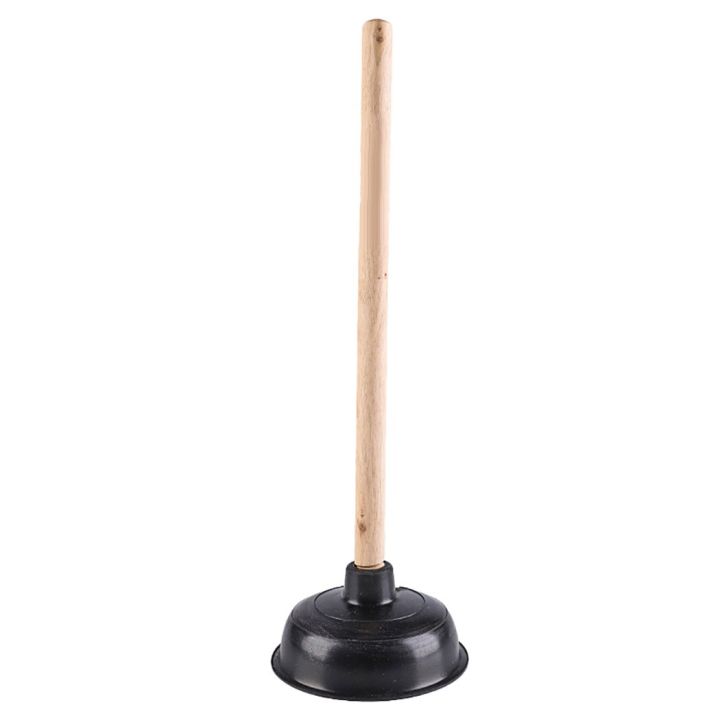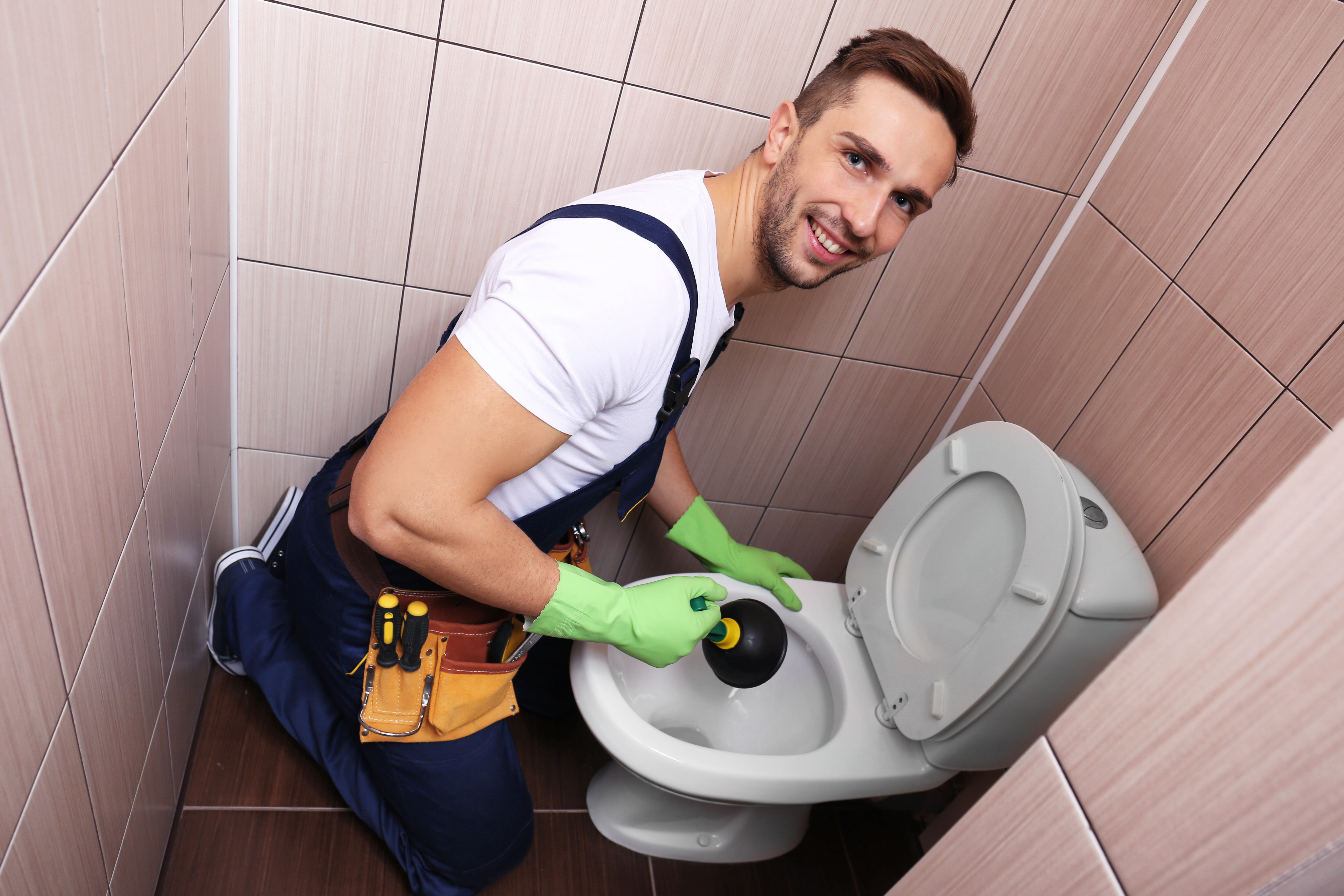Mastering Plunger and Drain Cleaners: Professional Strategies
Mastering Plunger and Drain Cleaners: Professional Strategies
Blog Article
Do you find yourself in search of help involving How To Use Your Toilet Plunger Correctly in 5 Easy Steps?

Intro
Correct maintenance of household drains pipes is necessary for avoiding clogs and making certain smooth water flow. Among the secret devices in every property owner's toolkit is the plunger, along with various drainpipe cleansers developed to take on stubborn obstructions efficiently. This write-up checks out just how to make use of plungers and drainpipe cleaners properly to keep your drains pipes flowing easily.
Section 1: Recognizing Plungers
Sorts of Plungers
There are a number of types of plungers available, each designed for various kinds of drains and obstructs. The most common kinds include cup bettors, flange plungers, and accordion bettors.
How Plungers Work
Bettors service the principle of developing stress and suction to remove blockages. When correctly used over a drainpipe, they develop a vacuum cleaner that can take out debris or break up blockages.
Choosing the Right Bettor
Choosing the best plunger relies on the sort of drain and the nature of the clog. Mug bettors are ideal for sinks and bathtubs, while flange bettors are better suited for toilets as a result of their design.
Common Blunders with Bettors
Staying clear of these errors makes sure effective plunging: inappropriate seal around the drainpipe, insufficient pressure, and unclear bordering particles.
Area 2: Making Use Of Plungers Efficiently
Prep work
Prior to plunging, make sure the bettor covers the drain completely and creates a tight seal. Clear any visible debris around the drain opening.
Method
Start with gentle plunging motions to build suction. Increase pressure slowly, making use of a consistent rhythm. Repeat as needed until the drainpipe clears.
Troubleshooting Tips
If diving does not work, attempt readjusting the seal, applying petroleum jelly for a far better seal, or utilizing a various kind of bettor.
Section 3: Comprehending Drain Cleansers
Types of Drainpipe Cleaners
Drain cleansers can be chemical or chemical. Chemical cleaners utilize solid chemicals to dissolve clogs, while enzymatic cleansers make use of natural enzymes to break down raw material.
Just How Drainpipe Cleaning Company Work
Chemical cleaners respond with obstructions to dissolve them, while chemical cleansers break down natural products like hair and grease without hurting pipelines.
Security Considerations
Constantly use handwear covers and eye protection when making use of chemical drain cleansers. Make certain appropriate ventilation and adhere to maker instructions carefully.
Eco-Friendly Alternatives
Think about using vinegar and cooking soda or enzyme-based cleansers for green alternatives that are safer for pipes and the environment.
Area 4: Using Drainpipe Cleaners Efficiently
Application Methods
Pour chemical cleaners directly into the drain opening. Allow them to help the suggested time prior to purging with hot water. Chemical cleansers need to sit overnight.
Preventative measures
Avoid blending different sorts of cleaners, as this can generate toxic fumes. Never ever utilize chemical cleaners in conjunction with a bettor, as spilling can happen.
Handling Stubborn Clogs
For persistent obstructions, take into consideration making use of a pipes serpent or calling an expert plumbing to stop damages to pipes.
Verdict
In conclusion, comprehending how to utilize bettors and drain cleaners successfully is essential for preserving healthy pipes systems. By picking the right tools and methods, home owners can tackle small obstructions and protect against major plumbing issues down the line.
How To Properly Use A Plumbing Snake To Clear Drains
When any drain clogs in our home arise, we tend to gravitate toward the plunger and little else. In cases where the plunger and its vacuum-created pressure are not able to clear clogs, many immediately move to harmful chemicals or simply call their plumber to fix the issue.
we’re happy to help with all drain cleaning needs and concerns. This includes informing you on a few other home remedies you may have at your disposal for minor to moderate clogs, one of which is the use of a plumbing snake. Many people have never used one of these before – let’s go over the steps to take when your drain clogs and you have a plumbing snake available.
Attempt Plunger Use
The first step here, as we noted above, should indeed be to grab your plunger when you notice a drain clog and attempt to resolve it this way. If you’re unsure how to use a particular type of plunger, our plumbers can answer any questions you have. If this doesn’t do the trick, however, you move on to the snake.
Locate And Prepare Snake
A plumbing snake is a metal or plastic device that’s generally about a quarter of an inch thick. It’s design with significant extensions, meant to reach down into your clogged drain and push the clog out. Snakes also contain drain augers that will latch onto and push stubborn blockages.
If your plunger doesn’t clear a clog, locate your snake and bring it to the drain in question. We also recommend keeping a bucket nearby to collect the clog once you pull it out, plus we’d advise wearing goggles and possibly protective gloves.
Feed Snake
Once you’re ready to go, feed the snake slowly down the drain, using the crank device it comes with to keep it moving until it finds the clog. Once this happens, much of the clog will be latched onto the coil so you can pull it out, while the rest will simply break up and flow downward.
Detach Debris
Remove the snake slowly from the drain, and once you’ve done so, pick off any debris that’s stuck to the coil. This is another area where wearing gloves is a must.
Flush Drain
Finally, take a few minutes to ensure the snake has done its job correctly. If you’ve been using it on a toilet, flush the toilet a couple times and make sure everything flows well. If you’ve used it on a different drain, flush it with some room temperature water.
https://www.mybuddytheplumber.com/blog/how-to-properly-use-a-plumbing-snake-to-clear-drains/

Application Methods
Pour chemical cleaners directly into the drain opening. Allow them to help the suggested time prior to purging with hot water. Chemical cleansers need to sit overnight.
Preventative measures
Avoid blending different sorts of cleaners, as this can generate toxic fumes. Never ever utilize chemical cleaners in conjunction with a bettor, as spilling can happen.
Handling Stubborn Clogs
For persistent obstructions, take into consideration making use of a pipes serpent or calling an expert plumbing to stop damages to pipes.
Verdict
In conclusion, comprehending how to utilize bettors and drain cleaners successfully is essential for preserving healthy pipes systems. By picking the right tools and methods, home owners can tackle small obstructions and protect against major plumbing issues down the line.
How To Properly Use A Plumbing Snake To Clear Drains
When any drain clogs in our home arise, we tend to gravitate toward the plunger and little else. In cases where the plunger and its vacuum-created pressure are not able to clear clogs, many immediately move to harmful chemicals or simply call their plumber to fix the issue.
we’re happy to help with all drain cleaning needs and concerns. This includes informing you on a few other home remedies you may have at your disposal for minor to moderate clogs, one of which is the use of a plumbing snake. Many people have never used one of these before – let’s go over the steps to take when your drain clogs and you have a plumbing snake available.
Attempt Plunger Use
The first step here, as we noted above, should indeed be to grab your plunger when you notice a drain clog and attempt to resolve it this way. If you’re unsure how to use a particular type of plunger, our plumbers can answer any questions you have. If this doesn’t do the trick, however, you move on to the snake.
Locate And Prepare Snake
A plumbing snake is a metal or plastic device that’s generally about a quarter of an inch thick. It’s design with significant extensions, meant to reach down into your clogged drain and push the clog out. Snakes also contain drain augers that will latch onto and push stubborn blockages.
If your plunger doesn’t clear a clog, locate your snake and bring it to the drain in question. We also recommend keeping a bucket nearby to collect the clog once you pull it out, plus we’d advise wearing goggles and possibly protective gloves.
Feed Snake
Once you’re ready to go, feed the snake slowly down the drain, using the crank device it comes with to keep it moving until it finds the clog. Once this happens, much of the clog will be latched onto the coil so you can pull it out, while the rest will simply break up and flow downward.
Detach Debris
Remove the snake slowly from the drain, and once you’ve done so, pick off any debris that’s stuck to the coil. This is another area where wearing gloves is a must.
Flush Drain
Finally, take a few minutes to ensure the snake has done its job correctly. If you’ve been using it on a toilet, flush the toilet a couple times and make sure everything flows well. If you’ve used it on a different drain, flush it with some room temperature water.
https://www.mybuddytheplumber.com/blog/how-to-properly-use-a-plumbing-snake-to-clear-drains/

As a devoted person who reads about Tips on How to Effectively Use a Plunger, I was thinking sharing that piece of content was a smart idea. Sharing is caring. Helping others is fun. Thank-you for taking the time to read it.
Book Appointment Report this page